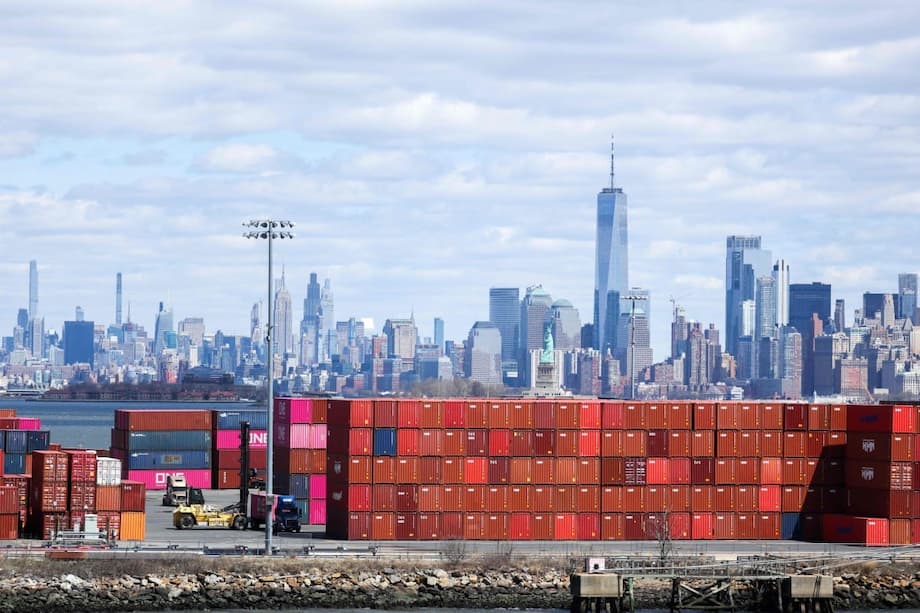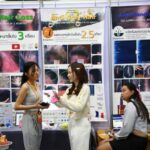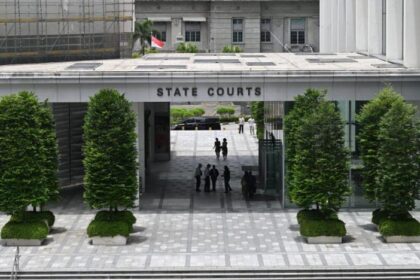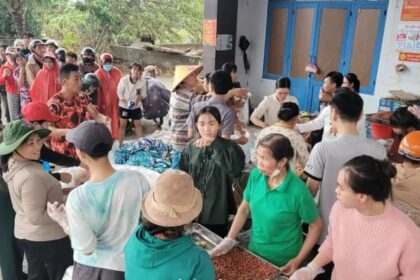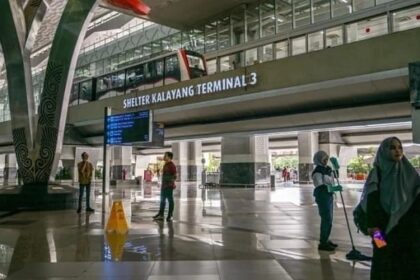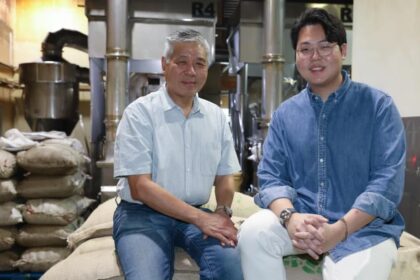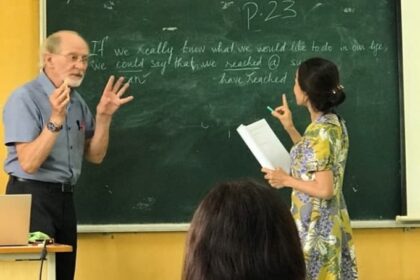Why Section 337 Matters Now
Section 337 investigations have become one of Washington’s most forceful tools for policing intellectual property disputes tied to imported products. The proceedings take place at the US International Trade Commission (USITC), an independent federal agency with a unique border-focused mandate. When the Commission finds a violation, it can block infringing products from entering the United States with an exclusion order. That threat, even before any final ruling, changes business calculations for global electronics, energy equipment, and a wide range of consumer goods.
Chinese companies feature prominently in these cases. USITC data show that more than 40 percent of Section 337 investigations completed in 2024 involved a Chinese company. The docket in 2025 continues that pattern, including fresh probes targeting smart televisions and mobile devices tied to Chinese manufacturers. For Beijing and Chinese industry, the combination of fast timelines, broad remedies, and the risk of a total import ban has become a pressing concern.
Section 337 is both fast and sweeping compared with federal court litigation over patents or trade secrets. The ITC cannot award money damages, but it can cut off access to the US market, often within a period that companies measure in quarters rather than years. Average case duration has been under two years in recent periods, and the Commission sets a target schedule shortly after it starts an investigation. For global supply chains built on just-in-time inventories, that speed and the potential for an import block create an urgent strategic challenge.
The stakes reach beyond the companies in the headlines. Many investigations involve complex products assembled from components sourced across Asia, North America, and Europe. A single exclusion order can affect device repair channels, replacement parts, and service programs in the United States. That makes Section 337 cases an important barometer for technology competition, trade policy, and the security of supply in key industries.
What Section 337 Covers
Section 337 of the Tariff Act of 1930 targets “unfair methods of competition” and “unfair acts” in the importation of articles into the United States. In practice, most cases allege patent infringement by imported goods. The statute also reaches trademark and copyright violations, trade secret misappropriation linked to imported products, and certain false advertising claims. The Commission has clarified boundaries for claims that overlap with other agencies’ mandates, deferring to regulators like the Food and Drug Administration or US Customs and Border Protection when appropriate.
To obtain relief, complainants must prove a domestic industry. That requirement has two parts. First, the technical prong asks whether the complainant’s product practices at least one claim of the asserted IP, or whether there is a domestic industry in the process of being established. Second, the economic prong requires evidence of significant investment in plant and equipment, significant employment of labor or capital, or substantial investment in the exploitation of the IP through research and development, engineering, or licensing. Recent decisions scrutinize what activities count toward this economic showing, with ongoing debate over the weight given to customer-facing engineering and support work.
Remedies at the ITC are injunctive. The Commission does not award damages. Exclusion orders, which bar infringing products from entry at the border, and cease and desist orders, which limit distribution of already imported inventory, are the primary tools. These remedies attract complainants who value speed and market access control, even when related litigation continues in district courts or before the Patent Trial and Appeal Board.
How an Investigation Proceeds
The process begins when a complainant files at the USITC alleging a violation of Section 337. If the Commission votes to institute, it publishes a notice and names respondents. The case is assigned to an administrative law judge (ALJ), who sets a fast schedule, including discovery, a claim construction process for patent cases, and an evidentiary hearing. The Office of Unfair Import Investigations (OUII), a unit within the Commission, often participates to represent the public interest and offer independent views on legal and technical issues.
Timeline
The Commission sets a target date for completion within 45 days of the case’s start. The ALJ conducts a trial-like hearing and issues an initial determination on violation. Parties can petition the Commission to review the ALJ’s ruling. If the Commission takes review, it may affirm, modify, or reverse. The entire process typically takes well under two years, with some categories of cases moving even faster under early disposition procedures that can resolve threshold issues within the first 100 days.
Remedies
If the Commission finds a violation, it can issue a limited exclusion order that applies to named respondents, or a general exclusion order that covers all infringing products regardless of source. General orders are less common and generally require a showing that a limited order would be ineffective due to widespread circumvention. Cease and desist orders can address existing inventories in the United States. Before issuing relief, the Commission weighs public interest factors, including effects on public health and welfare, competitive conditions in the US economy, production of like or directly competitive articles in the United States, and US consumers.
Enforcement and redesigned products
Exclusion orders take effect when issued and become final after a 60 day presidential policy review period carried out by the US Trade Representative. US Customs and Border Protection enforces exclusion orders at the border. Importers can seek rulings from Customs to confirm whether redesigned products fall outside the scope of an order, and the Commission can provide guidance on how orders apply to non-accused or redesigned articles. Post-termination proceedings also provide paths for challenging or clarifying ongoing obligations under a remedy.
Why Many Respondents Are From China
China is a major exporter of electronics, telecom gear, and components. Those sectors account for many Section 337 disputes, so the companies most exposed to US investigations often sit within Chinese supply chains. As Chinese brands expand direct sales in the United States and as US companies source more subsystems from Chinese factories, the risk of becoming a respondent rises.
Chinese legal and policy voices offer differing interpretations of the pattern. Some argue the trend reflects China’s central role in global manufacturing, where more trade naturally means more friction. Others view the ITC’s regime as a barrier that can be used to pressure competitors.
Yu Guofu, Director of Beijing Shengfeng law firm, has urged Chinese companies to see the forum as a rules-based venue rather than one aimed at any single country. Introducing his advice on strategy, he argued that companies should not avoid the process but master it.
All Chinese company have to do now is not to respond or moan about the injustice of system design, but to actively use the system to safeguard their lawful right.
Some scholars in China have taken a tougher stance. Ma Zhiguo of the IP Research Center of Xi’an Jiaotong University has described the use of Section 337 by multinationals as a trade battle anchored in intellectual property. His view reflects frustration that exclusion orders can limit competition and slow industrial upgrading by keeping products out of the US market.
Chinese institutions have also compiled loss-rate statistics in past years, finding higher rates for Chinese respondents compared with the global average. The data reflect an older sample, but they underline why many Chinese firms now invest in earlier compliance reviews, freedom-to-operate analysis, and design-around plans before launches in the US channel.
Electronics Spotlight, TVs, Phones and Displays
Recent investigations show how widely Section 337 can reach inside the electronics sector. In September 2025, the USITC launched an investigation into certain smart televisions after a complaint by Cerence Operating Company. The Commission named a large roster of respondents that included Sony entities and numerous TCL affiliates spanning China, Hong Kong, Mexico, Vietnam, and the United States. The complainant seeks a limited exclusion order and cease and desist orders. The case, numbered 337-TA-1461, is now before an ALJ for an evidentiary hearing and an initial determination.
USITC notices emphasize that launching a case does not prejudge the outcome. In announcing new probes, the agency underscores the neutral posture at the outset.
The USITC has not made any decision on the merits of the case.
In August 2025, the Commission also instituted an investigation into mobile cellular communications devices after a complaint by Pantech Corporation. The respondent list includes HMD entities, Lenovo and Motorola units, OnePlus affiliates, TCL affiliates, and Tinno. As with most ITC cases, the complainant seeks an exclusion order to block imports of accused devices if a violation is found. Any final remedy would follow a full hearing, Commission review, and a 60 day presidential policy review.
Display technology disputes illustrate the variety of legal theories at play. One high profile track involves allegations that a Chinese panel maker misappropriated OLED manufacturing trade secrets. Staff at the USITC’s OUII recommended exclusion in a 2024 brief, a step that can influence but does not decide the Commission’s vote. A separate OLED patent case filed by Samsung Display against BOE concluded in 2025 without an import ban, demonstrating how outcomes can differ based on the evidence, the domestic industry showing, and the public interest analysis.
Energy and Components, Solar Cells and Beyond
Section 337 disputes are not confined to consumer electronics. They extend into energy hardware and critical components. In late 2024, the Commission voted to investigate whether solar cells and modules tied to Runergy and Adani infringe Trina Solar’s patents for TOPCon (tunnel oxide passivated contact) technology. Trina sought a limited exclusion order and cease and desist orders to block imports of accused cells, modules, and downstream products containing the technology. The case highlights an important feature of Section 337, where companies from the same exporting nation may appear on opposite sides of a US dispute.
These actions intersect with onshoring plans and US investments by foreign-headquartered companies. Trina has announced manufacturing in Texas, while Runergy is building a facility in Alabama. As more producers add US capacity, domestic industry arguments will evolve, since the economic prong of Section 337 looks at US investment and activity tied to the asserted IP.
Other recent complaints have targeted specialized components like LCD glass substrates, pointing to how upstream materials suppliers can trigger downstream risk for television and panel makers. The result is a growing need for contract terms that address indemnities, redesign responsibilities, and cooperation in any ITC defense, because a single patent dispute can ripple through an entire product ecosystem.
Reform Talk in Washington
Debate over the scope and use of Section 337 is intensifying. Lawmakers have floated changes through bills such as the Advancing Americas Interests Act to sharpen the domestic industry requirement and require more rigorous public interest analysis before the Commission issues exclusion orders. Supporters argue that reforms would reserve the ITC for disputes that genuinely protect US industry and consumers, while discouraging complainants that do not actively use the asserted IP in the US market.
Policy advocates have also urged the Commission to curb perceived misuse by patent assertion entities. Critics say these entities can wield the threat of an import ban over complex products by asserting patents that cover small features, creating settlement pressure disconnected from the value of the invention. Proposals include ending the practice known as domestic industry by subpoena and strengthening the requirement that a complainant show a real connection between the asserted IP and a domestic industry that seeks border relief.
Practitioners are watching other developments as well. Changes in Commission composition, constitutional challenges to ALJ appointments, and evolving rules for early disposition could shape how quickly cases move and which cases the ITC accepts. Counsel also monitor the interaction between ITC remedies and parallel proceedings in district court and at the Patent Trial and Appeal Board, since the statute sets rules for stays and for how PTAB outcomes are weighed at the Commission.
How Chinese Firms Respond and Market Effects
Research on the market impact of Section 337 investigations on Chinese technology firms finds that share prices tend to drop on announcement of a new case. The longer term picture is more mixed. Companies that respond with concrete strategies, such as boosting research and development, diversifying sales toward multiple markets, and seeking targeted policy support, often recover and sometimes create more durable value. Firms that do not adapt tend to underperform. Studies also suggest that state owned enterprises lag private firms in strategic response, and companies without venture capital backing may be less agile than those with such support.
Chinese businesses have built playbooks to manage ITC risk. That starts with early patent landscaping and freedom to operate analyses before a US launch. Companies increasingly prepare design-around options that can be implemented quickly if a claim construction ruling goes poorly. They also line up US supply for service and repair to reduce potential disruption from a cease and desist order. Some manufacturers invest in US facilities tied to their core IP to strengthen domestic industry showings when they are in the complainant’s seat.
Chinese legal experts also advocate for system-level responses. That includes building early warning mechanisms for patent conflicts in export industries, training for in-house teams on ITC procedure, and coordination between companies and industry groups to present coherent positions on public interest factors. When disputes escalate, firms consider parallel challenges to asserted patents at the US Patent and Trademark Office and work with US importers on Customs rulings for redesigned products. Cross-border coordination has become a necessity.
The Bottom Line
- Section 337 cases let the USITC block imports of products tied to unfair acts like patent infringement or trade secret misappropriation.
- More than 40 percent of completed investigations in 2024 involved a Chinese company, reflecting China’s central role in export industries most often targeted.
- Remedies include limited or general exclusion orders and cease and desist orders, with a 60 day presidential policy review and enforcement by US Customs.
- The domestic industry requirement remains decisive and requires proof of technical practice and economic investment linked to the asserted IP.
- Recent electronics cases span smart TVs, mobile devices, and OLED displays, while energy hardware like solar cells is also under scrutiny.
- Reform proposals in Congress seek tighter standards to curb misuse and elevate public interest analysis before imposing import bans.
- Academic research finds short term market losses for Chinese firms at investigation launch, with long term outcomes dependent on strategic adaptation.
- Chinese companies respond with R&D investment, design-around planning, and deeper compliance, often coordinating with US partners on enforcement and redesigns.


